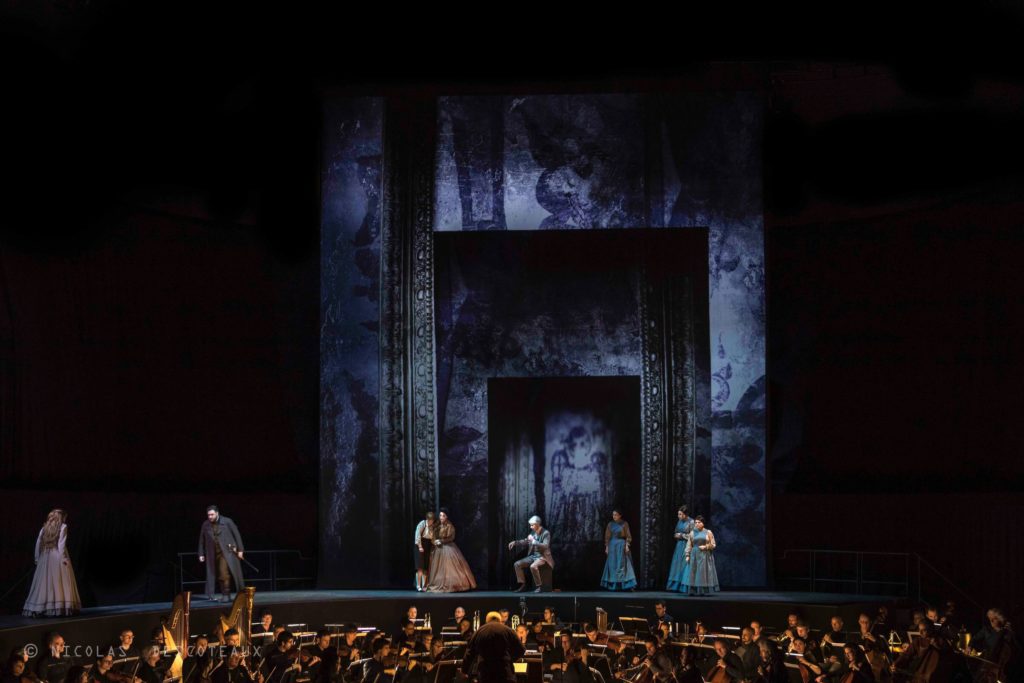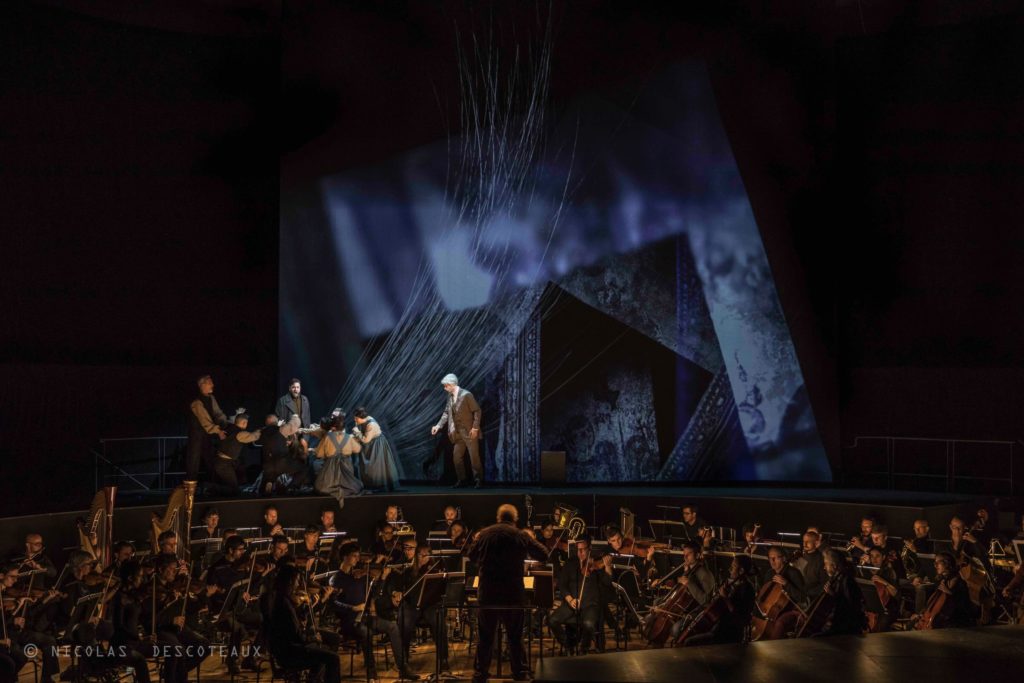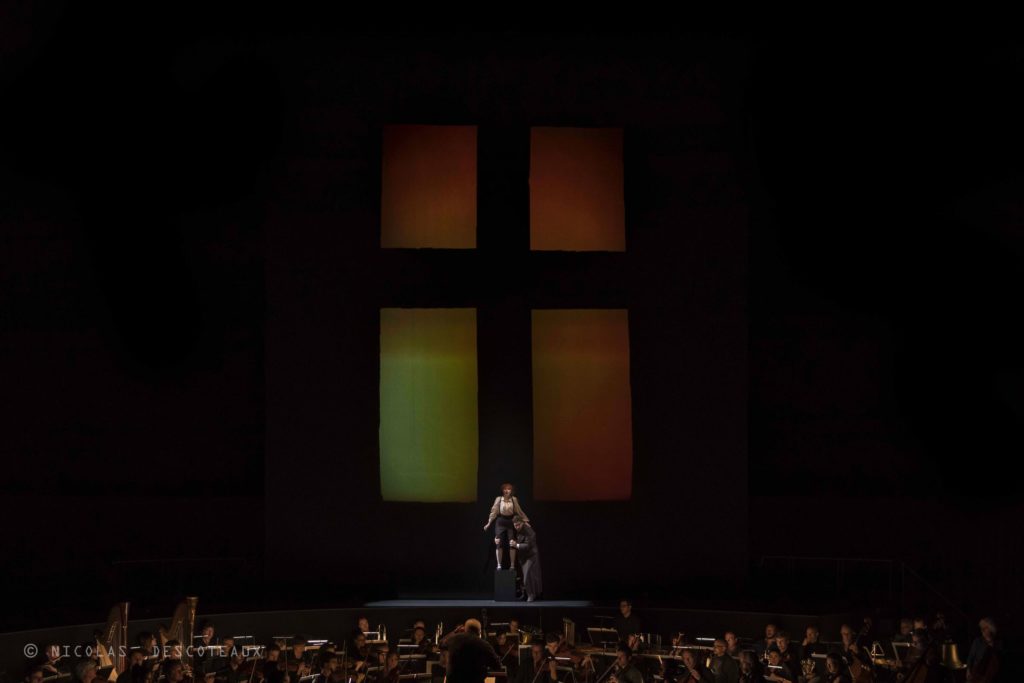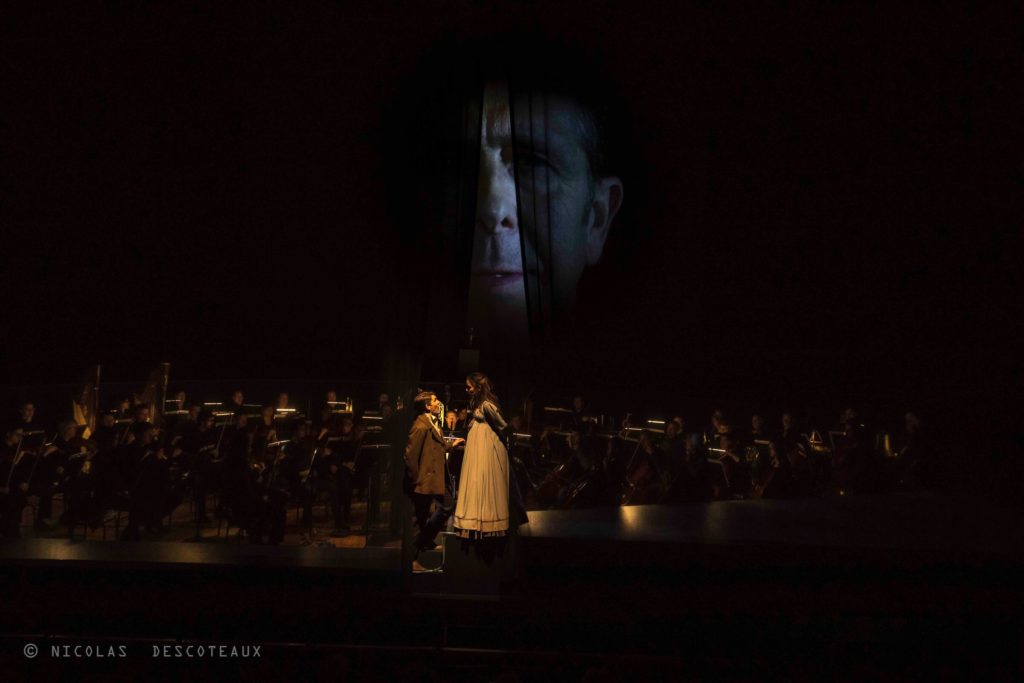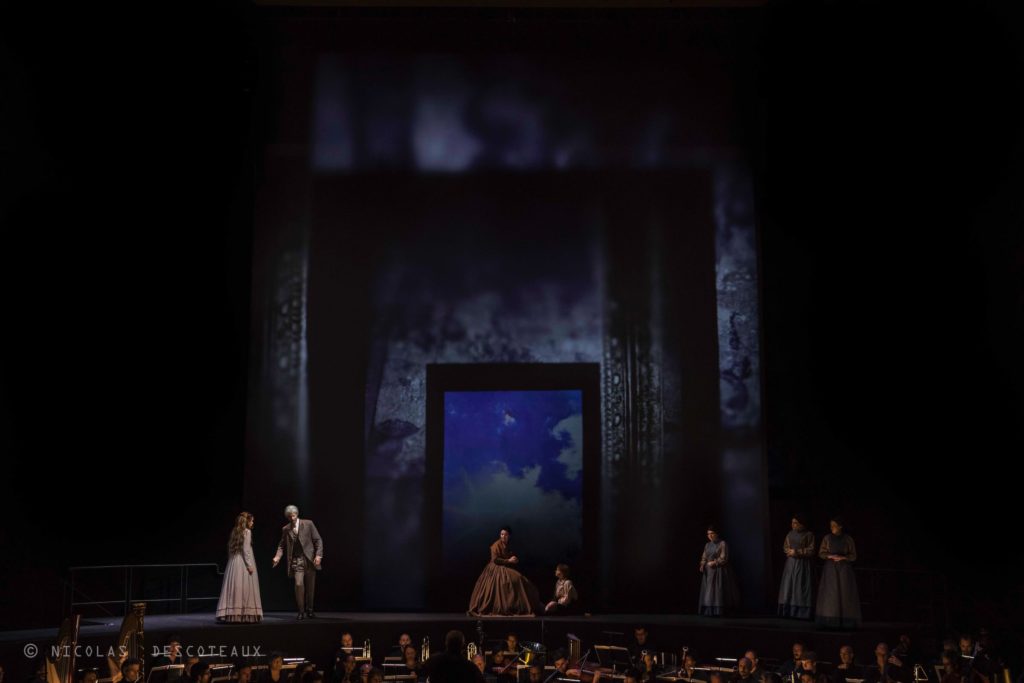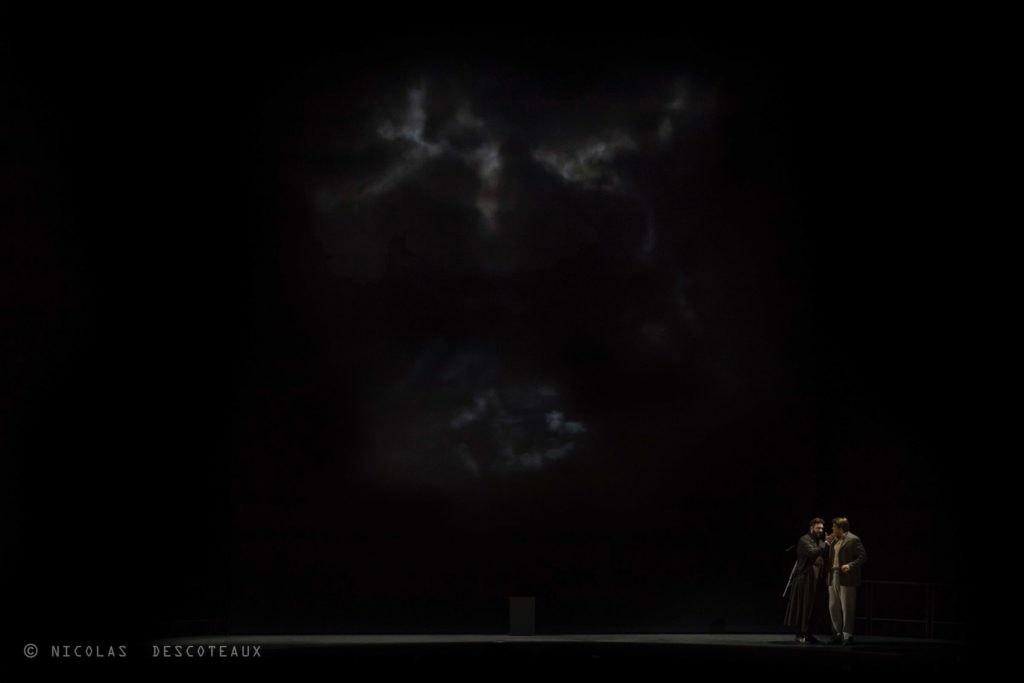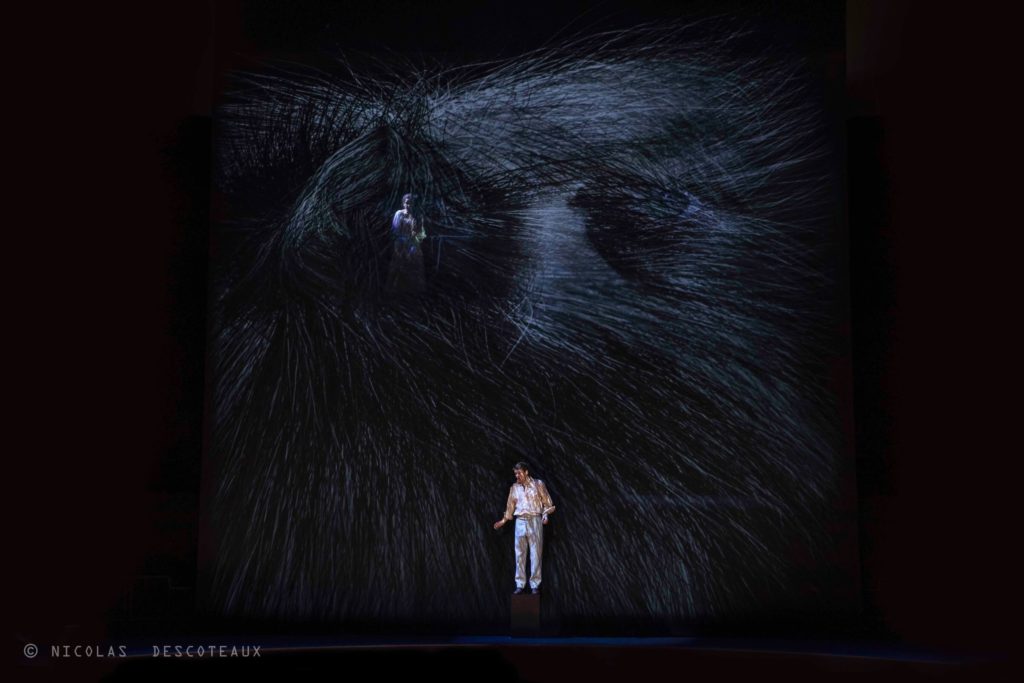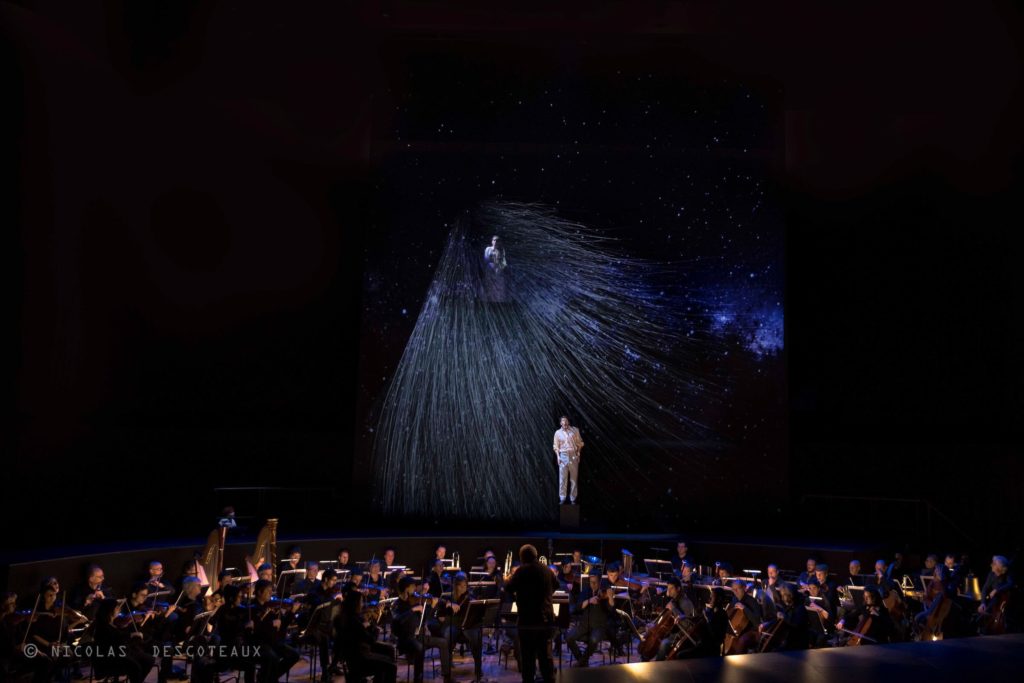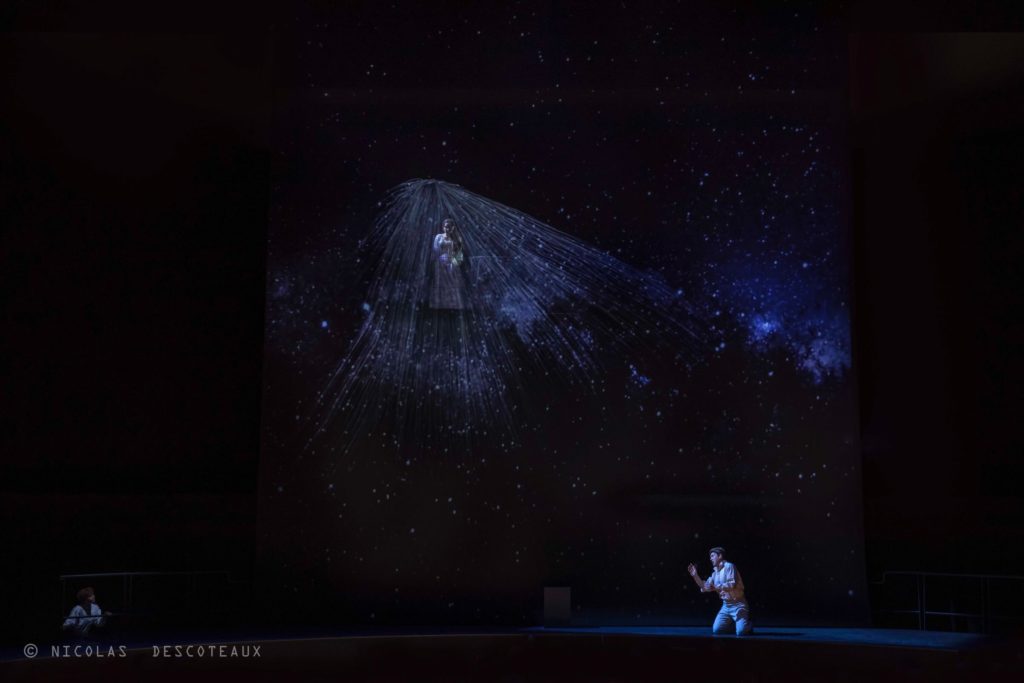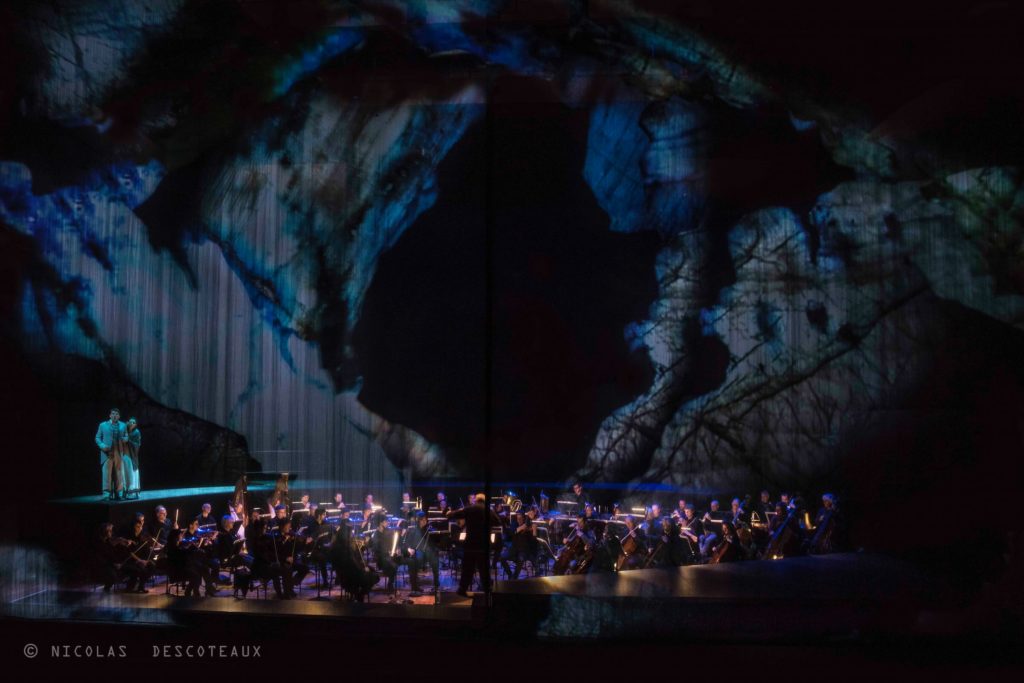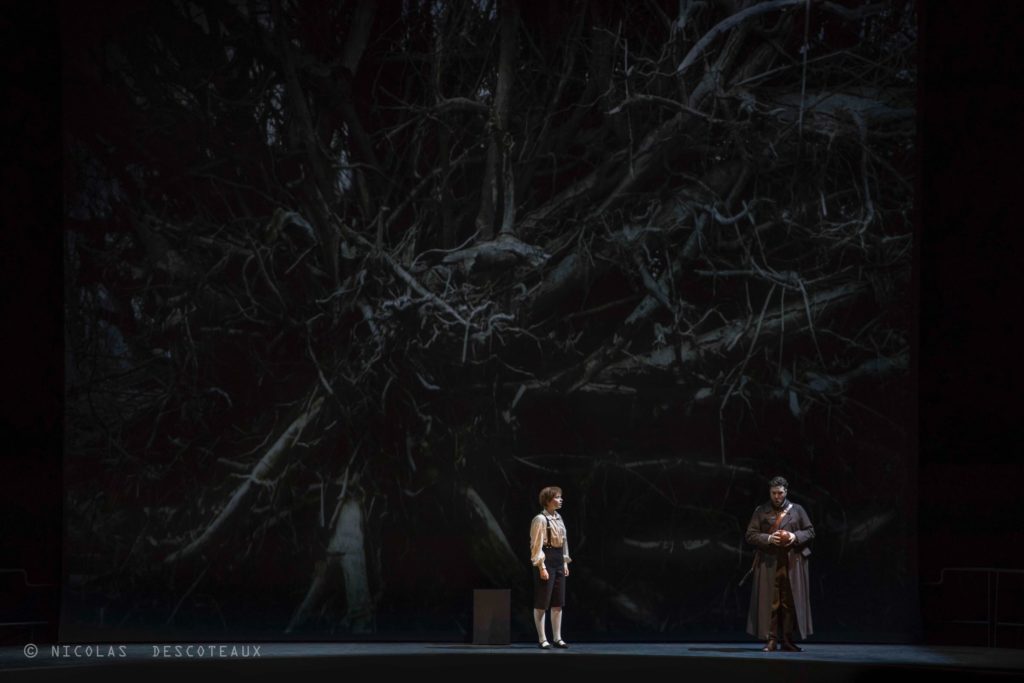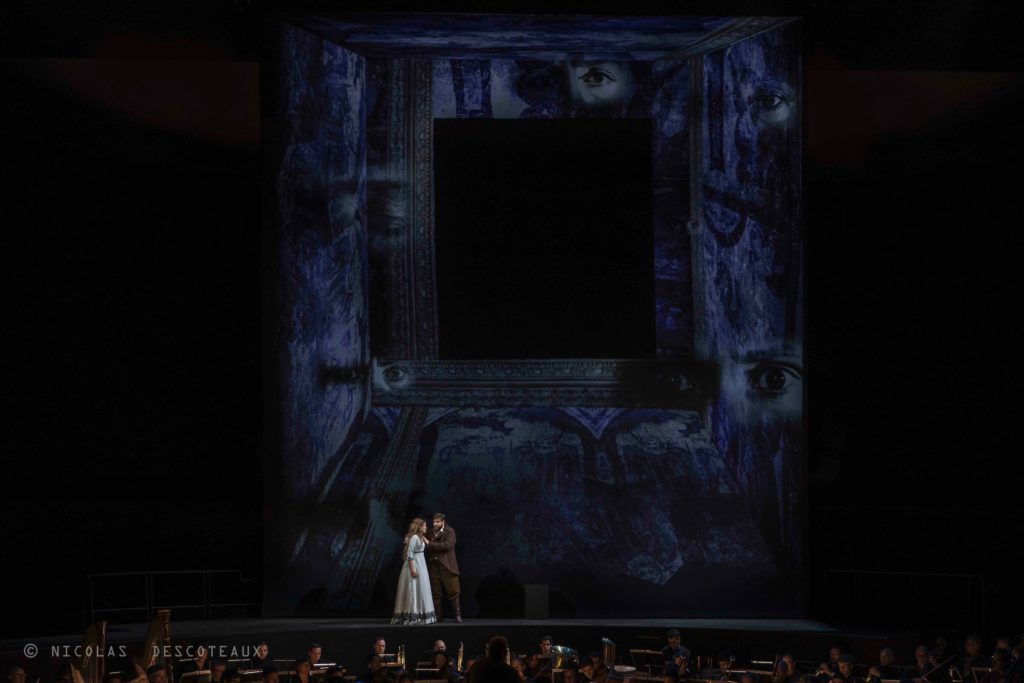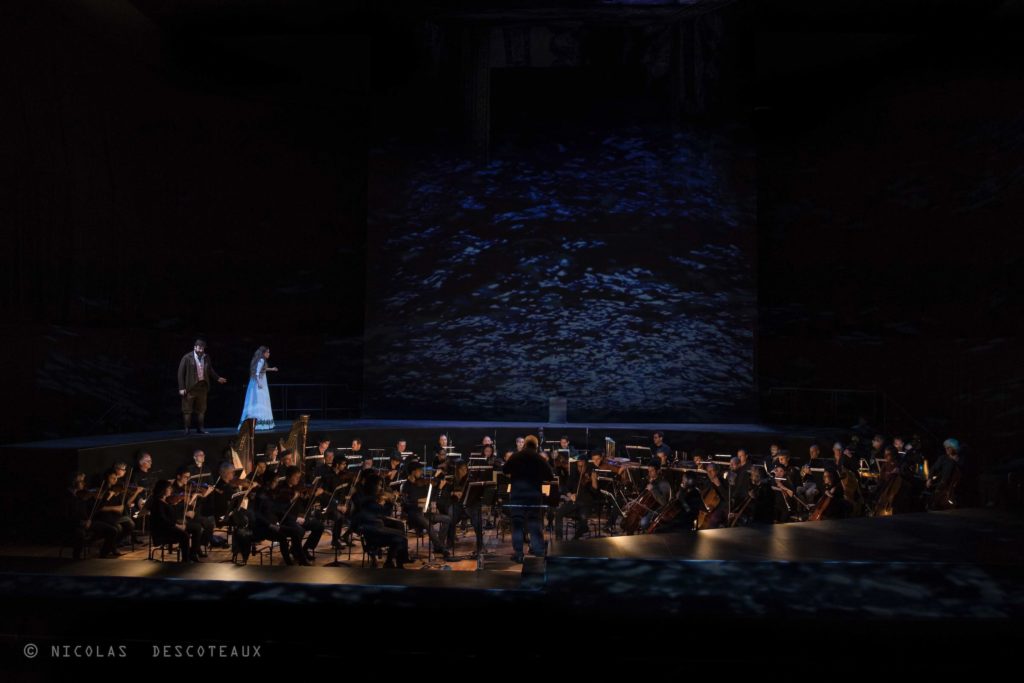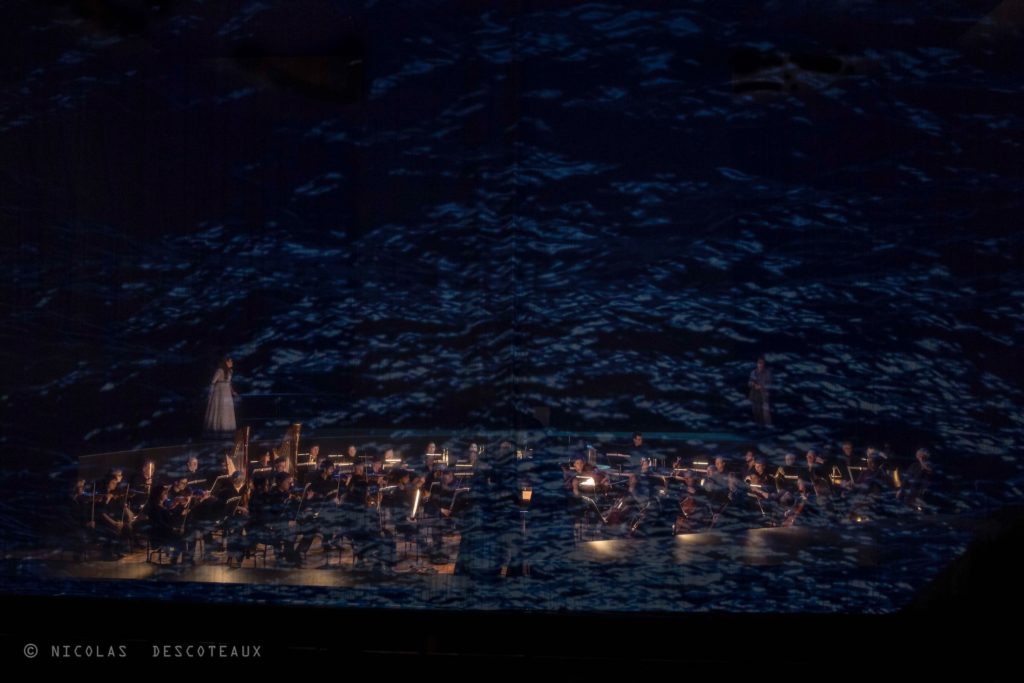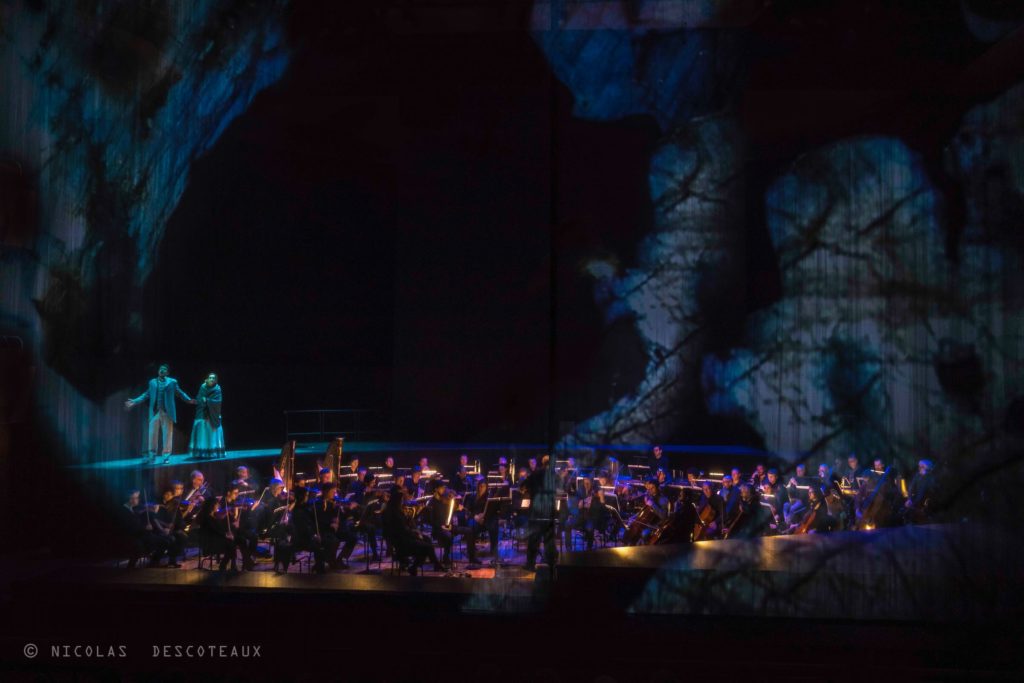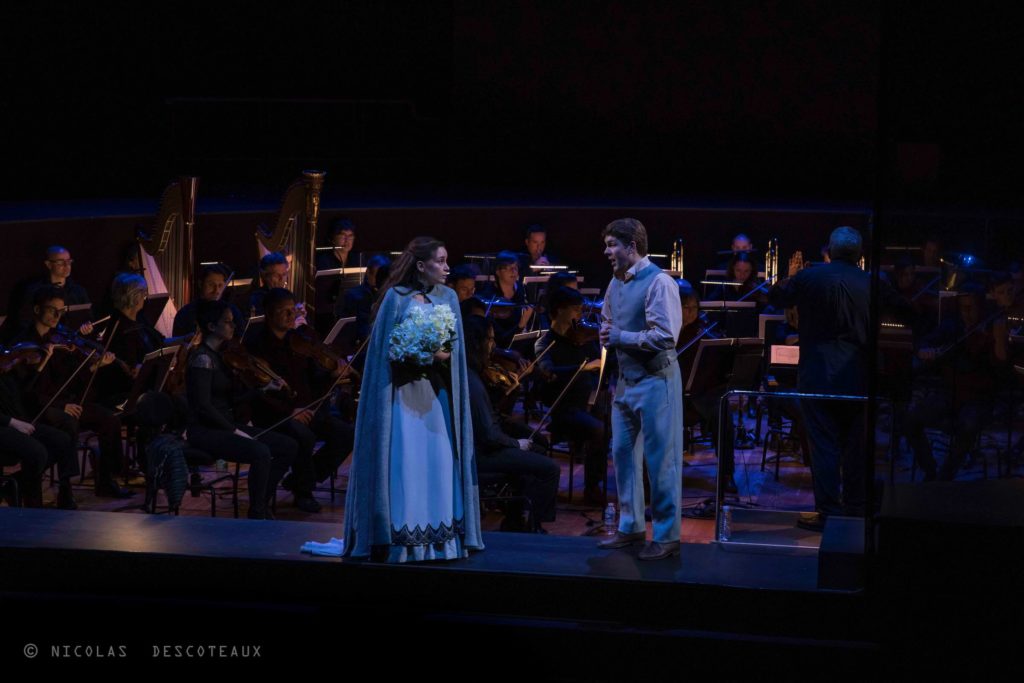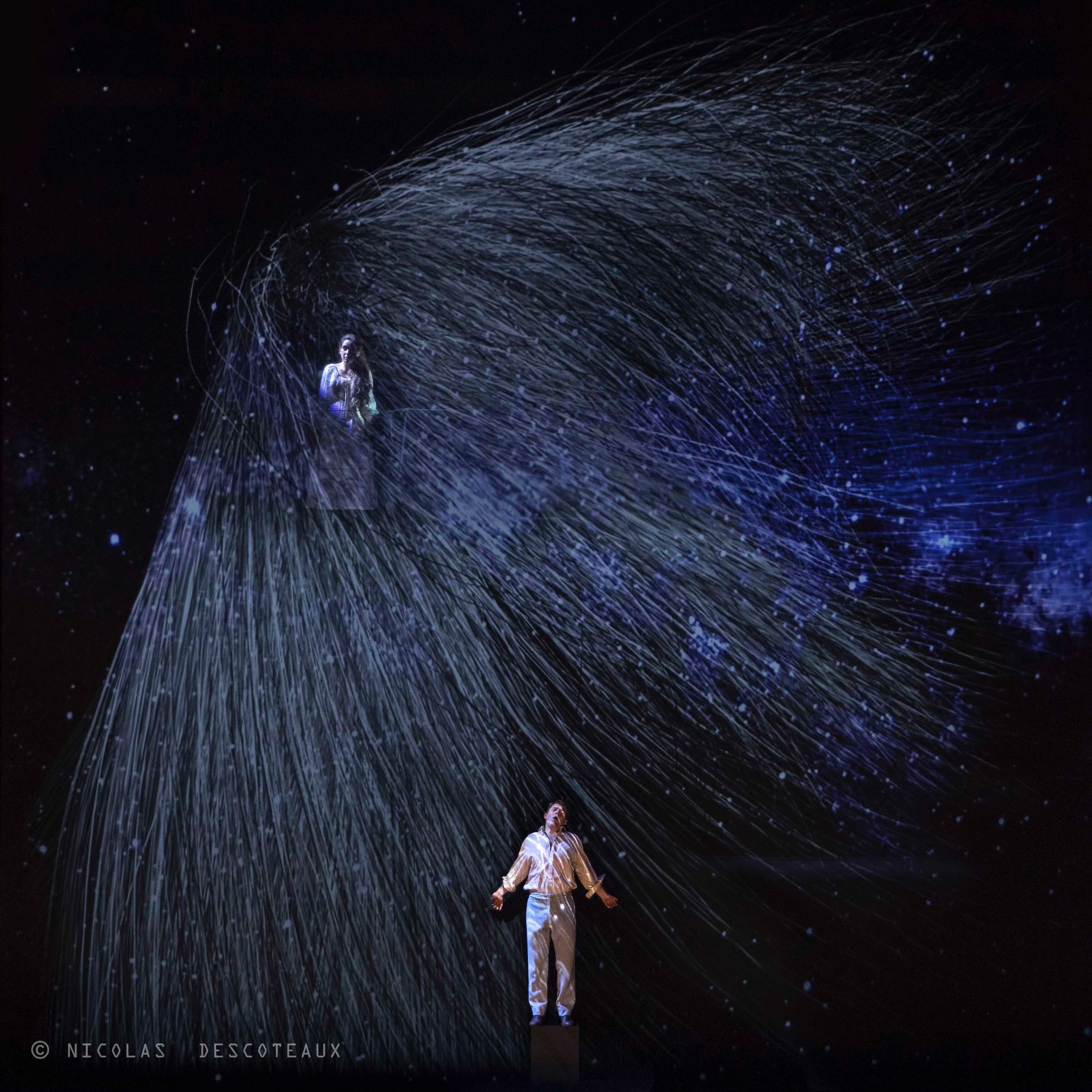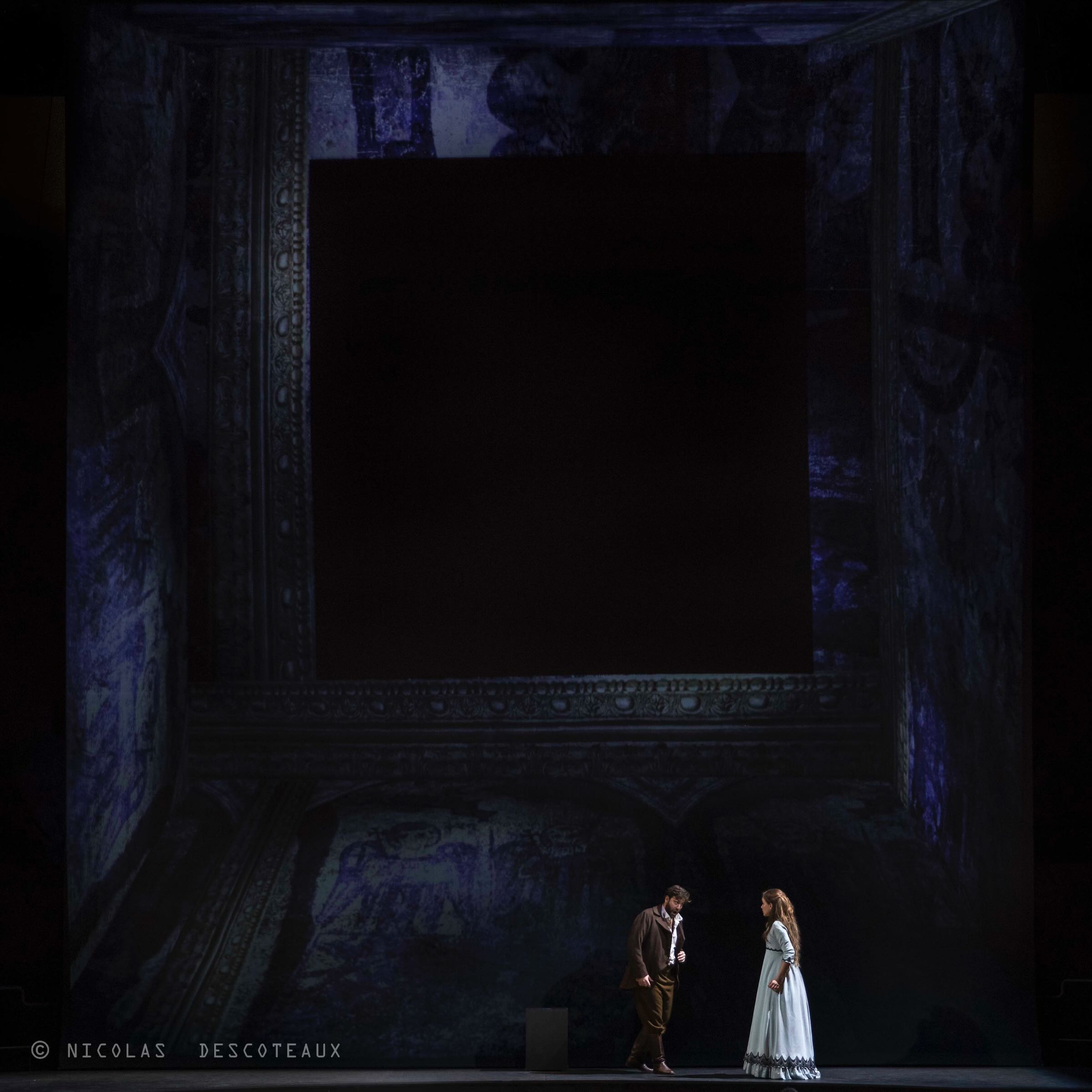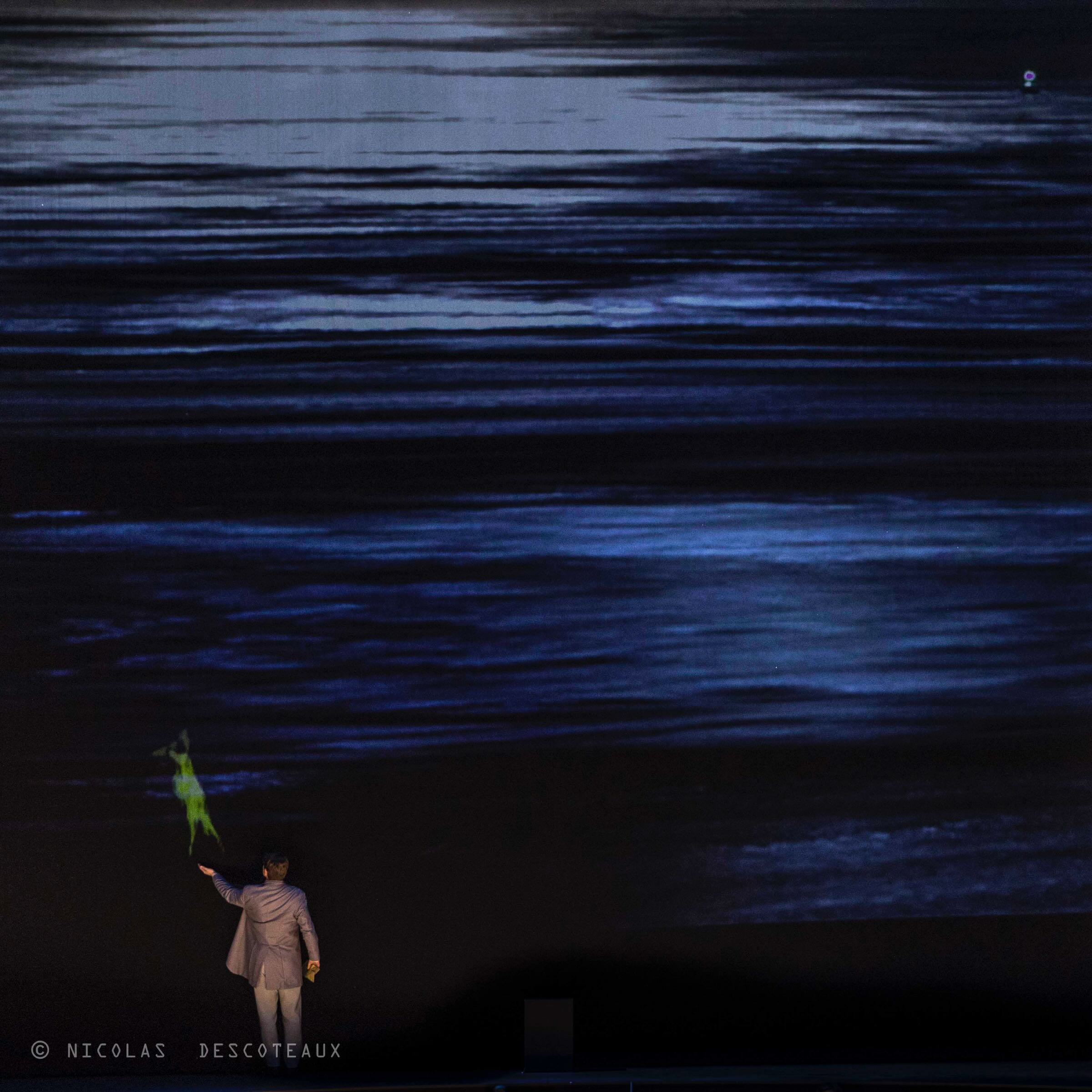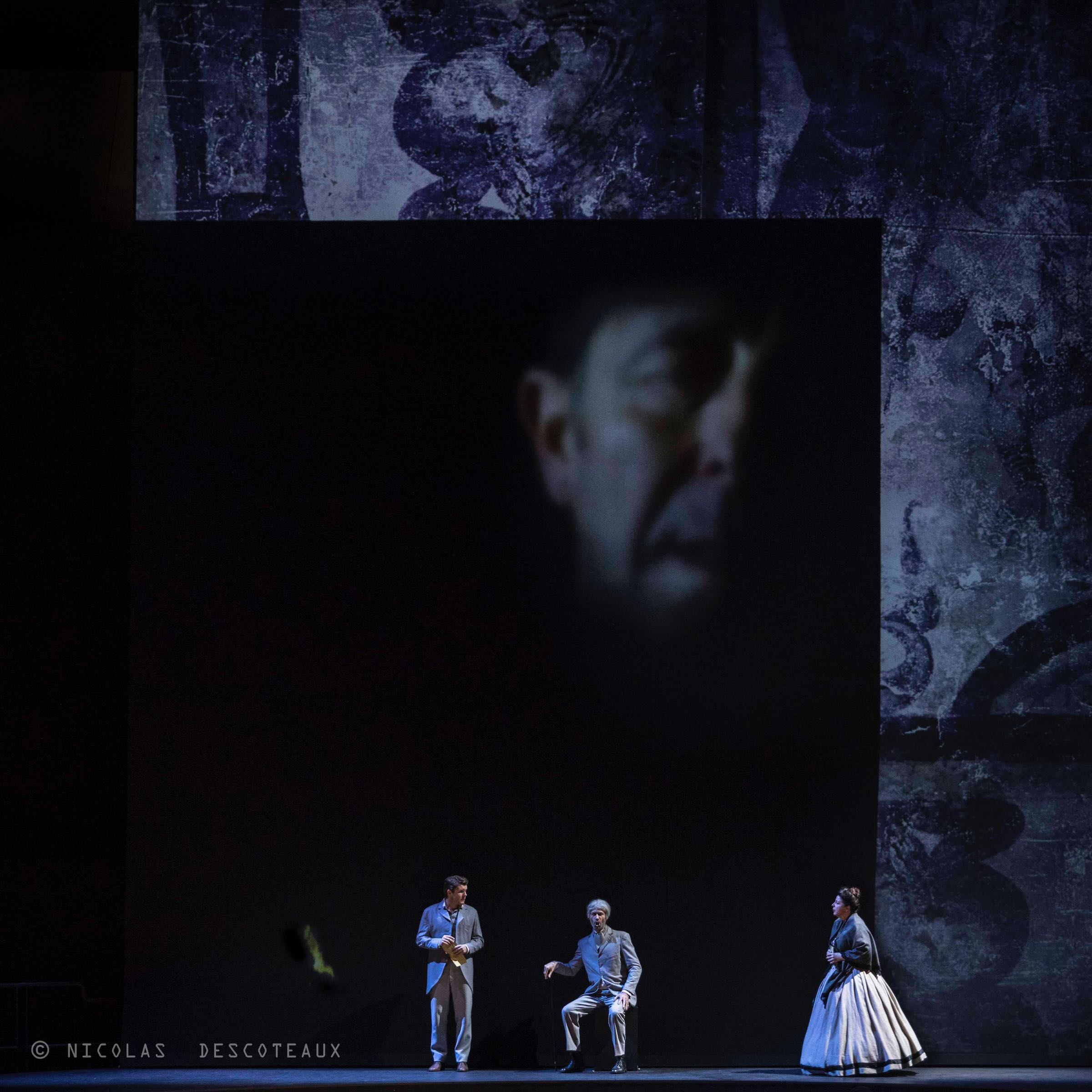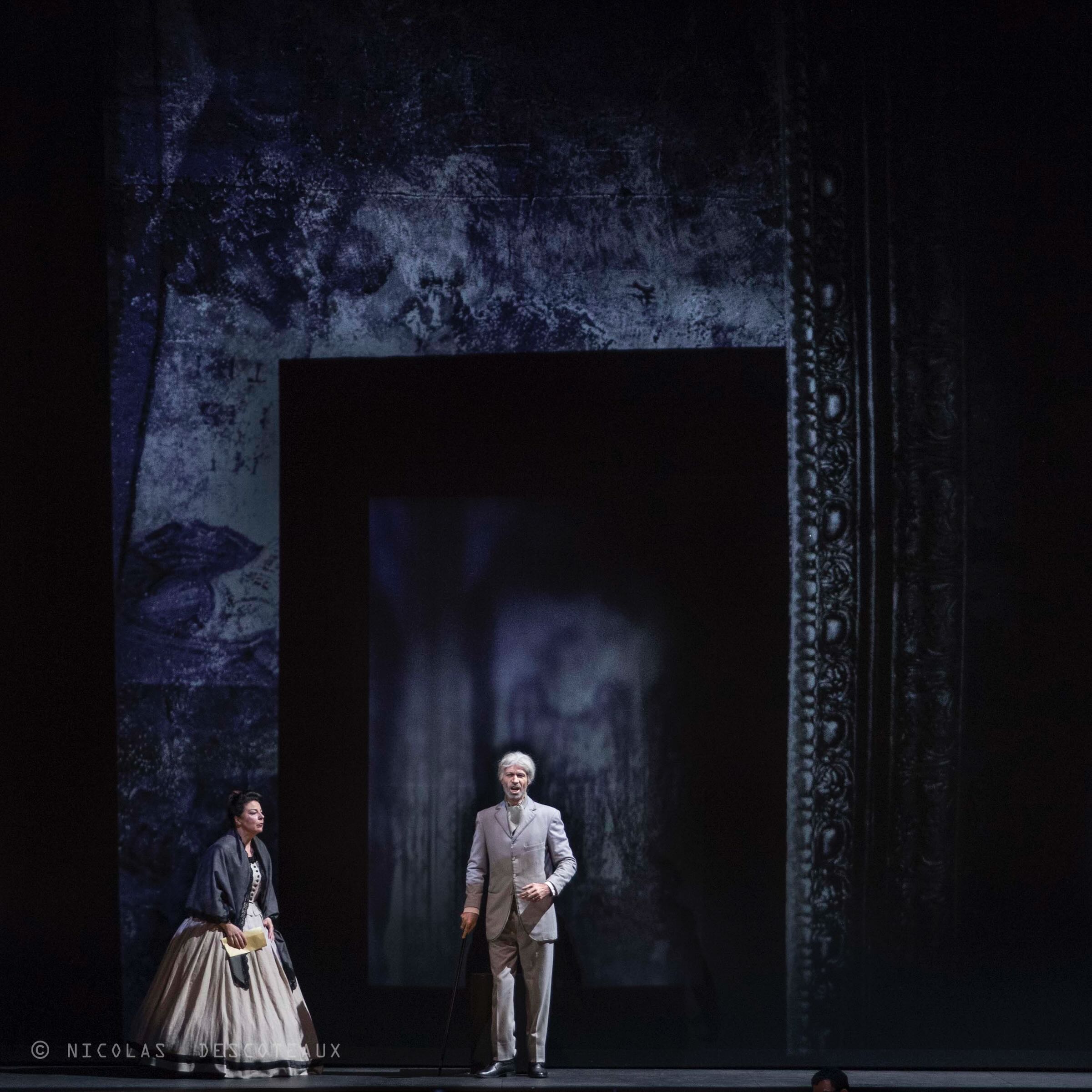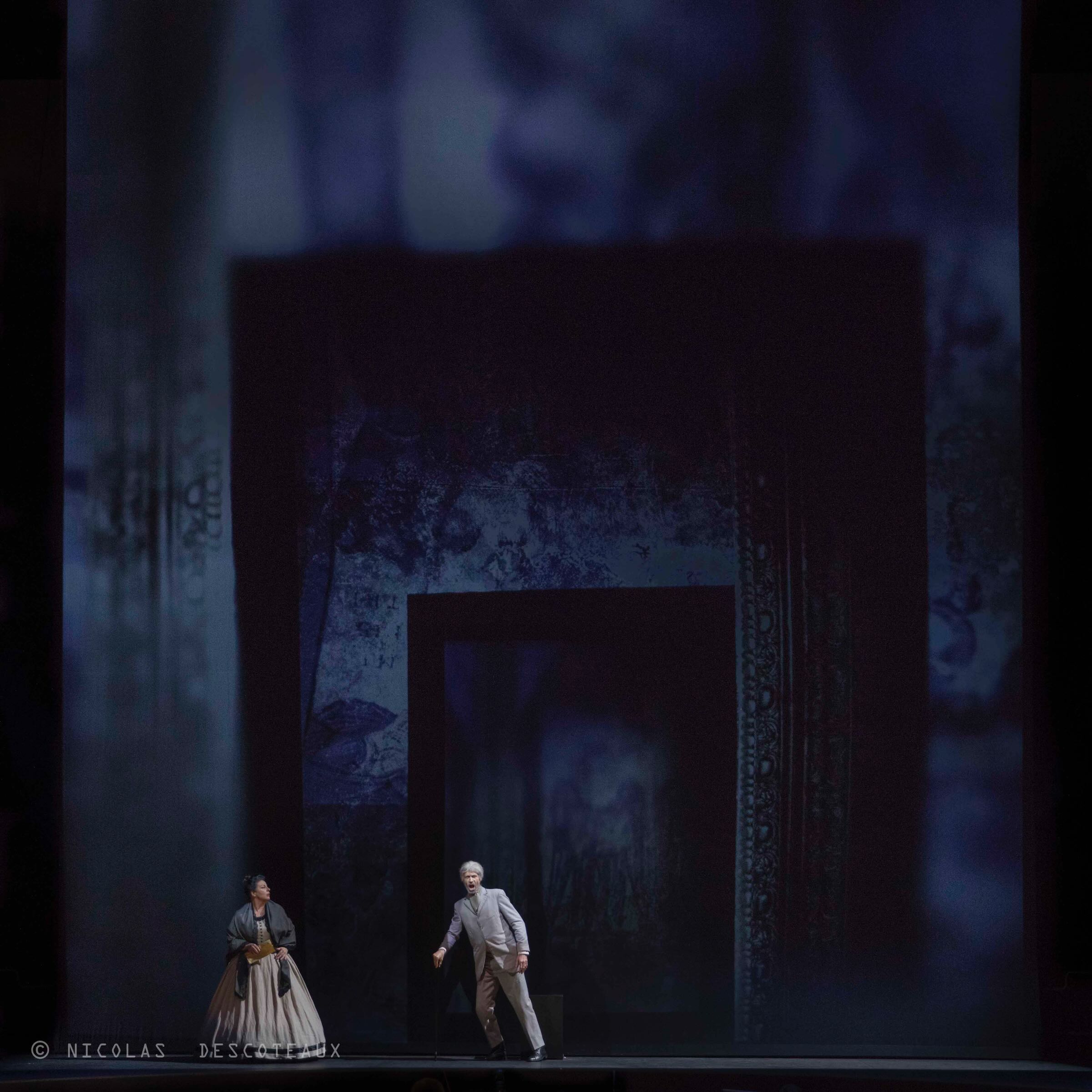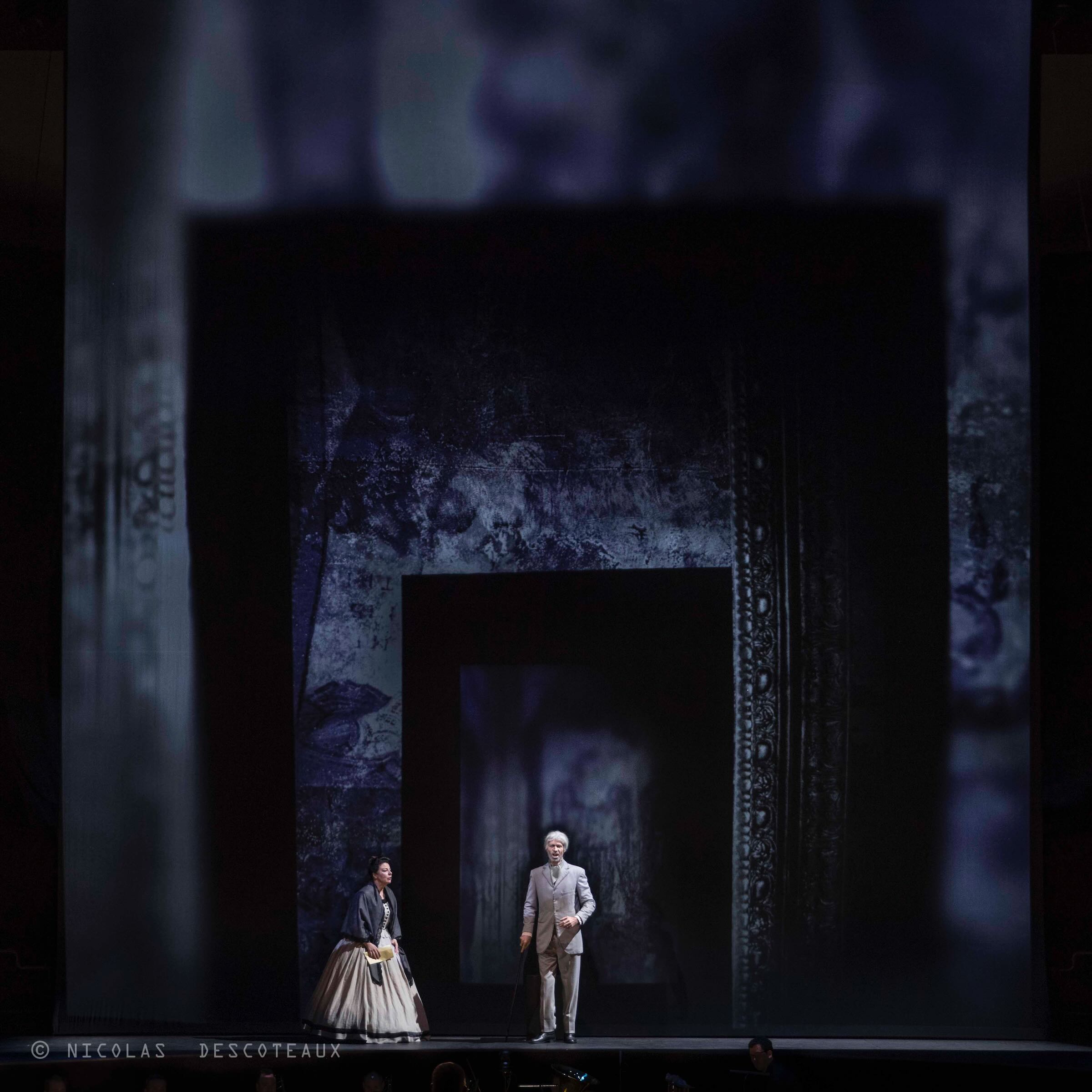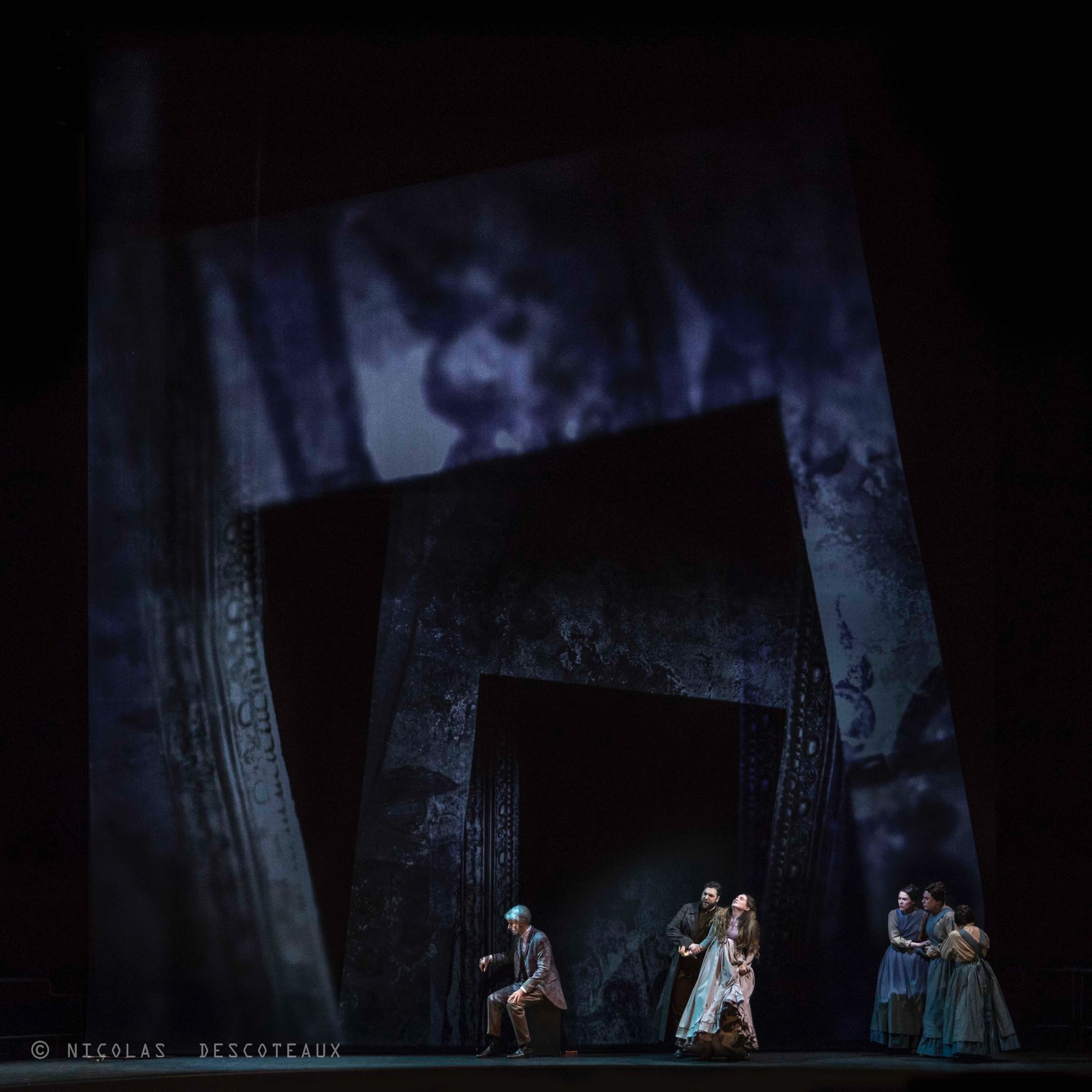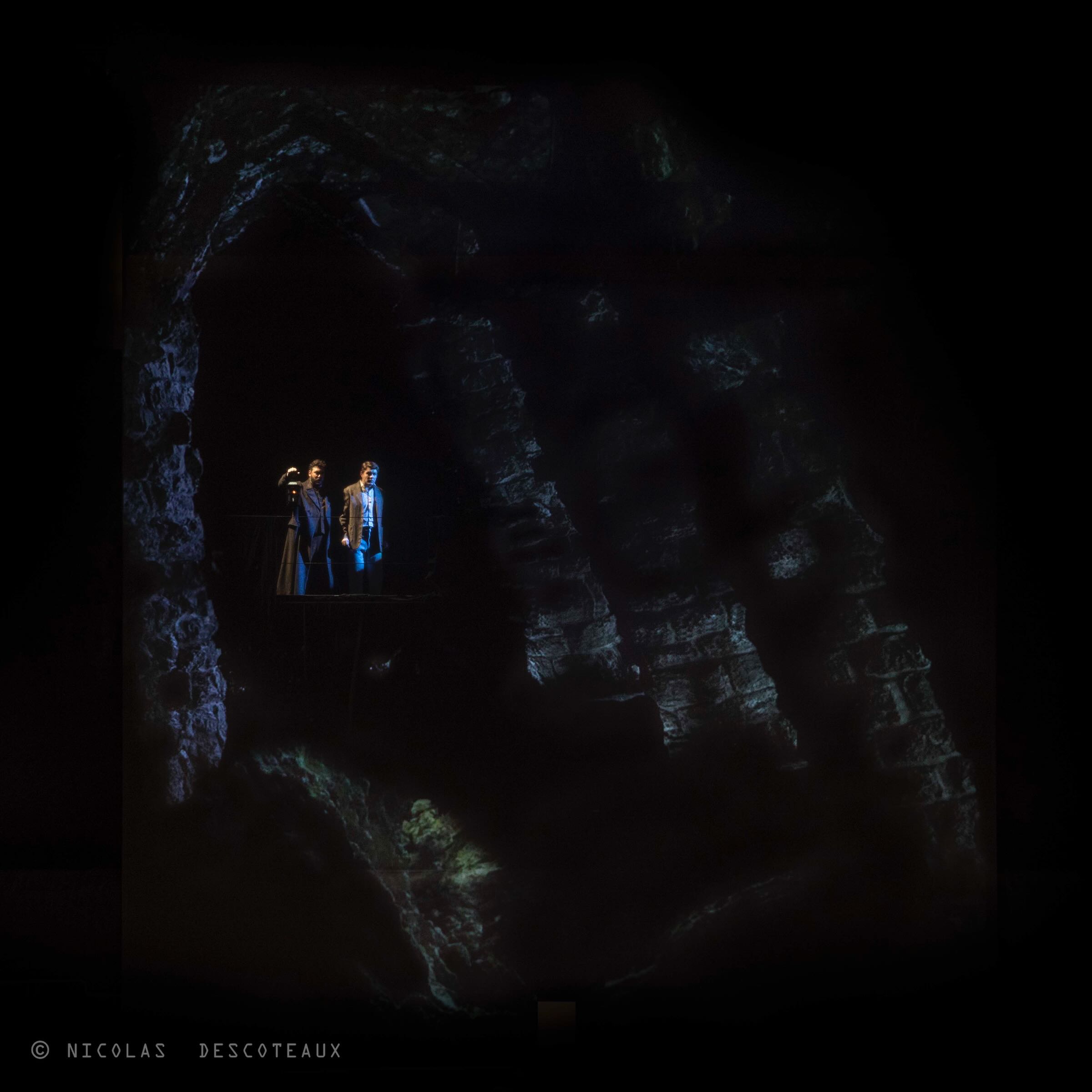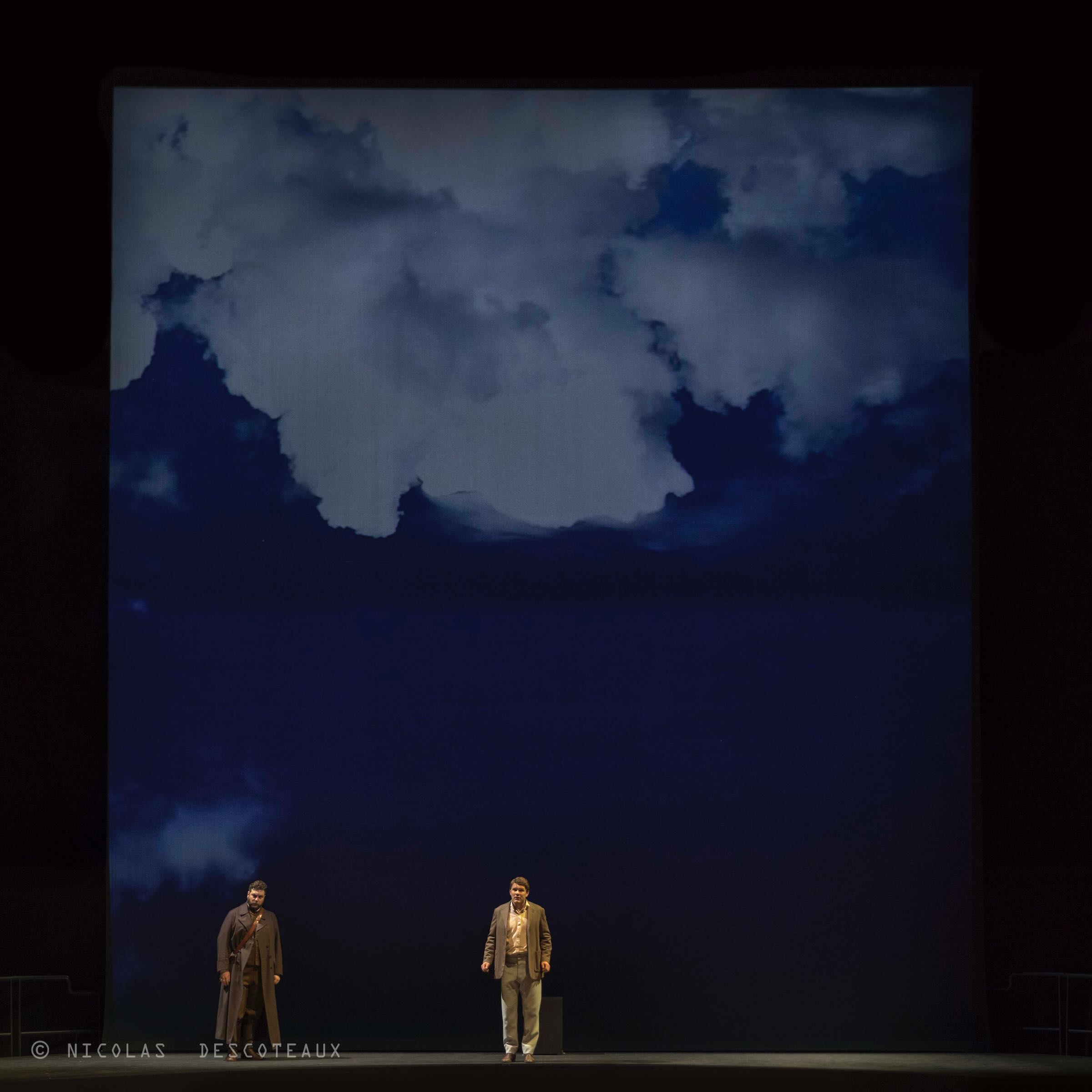Video design / Video stage design
Creation @ Opéra de Bordeaux – 1-2018
Tour: Japan (Kanasawa & Tokyo) 7 & 8-2018
award: named 3rd best classical music event of 2018 in Japan by 38 critics of “Ongaku No Tomo Magazine” (The Friend of Music)
Opera: Debussy – Libretto: M. Maeterlinck
Conductor: Marc Minkowski
Directed by Philippe Béziat and Florent Siaud
Costumes: Clémence Pernoud
Lighting: Nicolas Descoteaux
Digital hair: François Zajéga
With: Chiara Skerath, Stanislas de Barbeyrac and Alexandre Duhamel, Jérome Varniez, Sylvie Brunet-Grupposo, Maëlig Querré, Jean-Vincent Blot.
”"an infinite poetry"
Classic Agenda
Libération (newspaper)
“In Bordeaux, a new production with an original stage set-up celebrates the centenary of composer Claude Debussy’s death.
Each new production of this abysmally profound work is an experience, both backstage and in the auditorium. Pelléas…, a lyrical drama in five acts and twelve tableaux, is a mystery that poses problems. Its mystery lies in the fact that we’ll never get to the bottom of its story. This final word is certainly to be found in the past: what happened to Golaud’s father? Where does Mélisande come from? And her problems are scenic challenges: Debussy’s “parlé-chanté”, the physicality of the disproportionate hair that falls to the tower’s threshold, the wall that must be climbed to spy behind a window, the newborn baby in the last act… all challenges comparable to the statue of the Commander in Don Giovanni, which can be faced head-on or circumvented. Whatever the stage set-up, how does this new production move through the wet and bumpy territories of the kingdom of Allemonde? (…) In support, a video projected at the back of the stage or on a black tulle curtain helps overcome certain obstacles. The immense hairs radiate across the canvas like filaments running through the night sky, weaving a span where all the relationships, all the variables dear to Debussy’s music, could be placed. The window you have to climb through expands across the screen to encompass the entire stage, and even the auditorium, making you an accomplice to the jealous Golaud. Gazes are monomaniacally central to the video work, which insistently imposes pairs of eyes observing the viewer (in the manner of Dali’s painted eyes in the dream scene of Hitchcock’s Spellbound). The work sees us, we who struggle to discern its contours. (…) In the auditorium, spectators are no longer sticky with humidity but engulfed by torrents of unresolved emotion that sweep them away. Tears add to the dampness. (…)
The silences that conclude this work are among the densest in existence. Everything that has happened over the past three hours comes to a conclusion in the unfinished void, as the protagonists’ spirits soar to the rafters. We can’t go any further than that. This is perhaps the yardstick by which to judge the quality of a production of Pelléas et Mélisande. And the silence that filled the Bordeaux Auditorium was sublime.”
Guillaume Tion in Libération
Classic Agenda
“Let’s just say it straight out: this show is a great success. Philippe Béziat and Florent Siaud’s staging is sober yet infinitely poetic. It is supported by remarkable work on lighting (Nicolas Descôteaux) and video (Thomas Israël). While the use of video is becoming increasingly widespread in theater and opera, it is not always a guarantee of success, and unfortunately sometimes serves as a mask for otherwise uninspired productions. Here, although video is omnipresent, it never feels like a mere “technical gesture”. In turn, it depicts the plot locations in which the characters evolve (the appearance of the sky when Golaud and Pelléas come up from the underground is spectacular), but also underlines the symbolic aspects of the work. Among the superb images are Mélisande’s ring spinning slowly in the water, the close-up of the young woman’s gaze as she whispers to Pelléas “C’est que je te regarde” (“I’m looking at you”) while turning her back on him, and of course the admirable scene in the tower, where Mélisande’s hair becomes that of a comet, falling to the foot of the tower and enveloping Pelléas’s body. A brilliant idea that avoids the figuration of a truly endless head of hair (which is sometimes grotesque) without completely sidestepping the symbol.”
Laurent Amourette in Classic Agenda
Opera Forum
“If the title were not already taken and infamous, “the triumph of willpower” would be the ideal formula to characterize this new production of Pelléas et Mélisande at the Opéra National de Bordeaux. So let us confine ourselves to saluting the victorious audacity of its actors. We’d like to convey the fluidity, mobility and diversity of Debussy’s composition. If we fail to do so, we can say without hesitation just how much pleasure the evening gave us, even though we only approached it with reluctance.” (…)” A two-part black tulle curtain separates the stage area from the auditorium. Open or pulled, or barely lifted, it allows us to move seamlessly from one scene to the next, and justifies by demonstration the choice to perform the work by purging it of the extra bars Debussy had to add to allow for changes of scenery. Along with the panels at the back of the orchestra, it receives a stream of images from video designer Thomas Israël. Some are intended to represent the physical world, like the dense initial forest, or the turbulent waves, or the walls of the underground passages, or the high halls of the castle, where the cornices of the frames mingle with the reliquaries, and where the remains of frescoes, perhaps medieval, are the indecipherable trace of a long past. Others are more mysterious: do they illustrate the characters’ fantasies, those gazes that seem to spy on them, in this universe where suspicion reigns? Not even the hair seems to be born from a comet, in keeping with affinities with Baudelaire and Edgard Poe. Certainly, some projections can be irritating, as the designer’s imagination sometimes seems to impose itself without necessity, so expressive is the music. But they’re never at odds with the situation or the text, and that’s no small merit either!”
Maurice Salles in Forum Opera
The whole culture
“By having the characters wander around the orchestra on the stage, sometimes veiled in black tulle as a curtain, the show nevertheless imagines an original solution that highlights the singular poetry of the work, and its orchestral spells. The black-and-gray cameos of Thomas Israël’s videos, in tune with the sober scenography and enhanced by Nicolas Descôteaux’s lighting, often illustrate the atmospheres and settings of the drama, from the reflections of water to the half-light of the forest, from the O’Keeffe-style silver sun to a beach bathed in sunset, barely altered by a profusion of almost abstract moving lines suggesting Mélisande’s hair. The eye is caught by these projections, but they cannot quench Maeterlinck’s symbolic mysteries.”
Gilles Charlassier in Toute la culture.com
